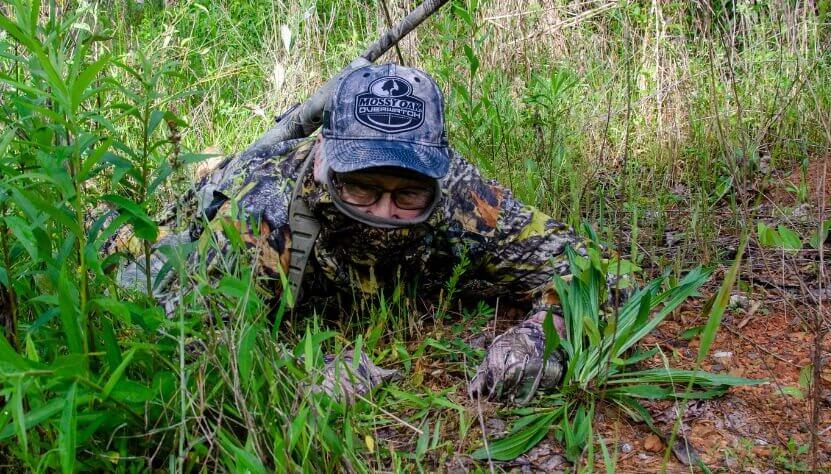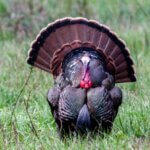Editor’s Note: Turkey hunting is a game of options: A turkey has certain choices, and the hunter has other choices. And, although a hunter may be able to select several different strategies to outfox a wily woods wizard like the wild turkey, the purpose of the following test is to help you determine which is the very-best tactic to use. Let’s examine turkey-hunting situations you may encounter once you’ve gotten a tom to gobble, and determine which option may be best and why.

- The turkey gobbles, but there’s a thicket between you and him. Because you know you can’t call the turkey through the thicket, you circle the thicket and get close to the gobbler before you start to call. What should you do next?
- Crawl to the edge of the thicket, and attempt to call the gobbler to you, if you’re hunting on private lands and know no one else is hunting there that day.
- Move to the end of the thicket, using the thicket as a blind, and try to call the turkey around the open end of the thicket.
- Leave the turkey alone, and plan to return and hunt him another day.
Answer: Crawl to the edge of the thicket, and attempt to call the gobbler to you, if you’re hunting on private lands and know no one else is hunting there that day is the best answer. By eliminating the obstacles between you and the turkey, you’ll greatly increase your chances of bagging the bird. However, only use this tactic on private lands. Anytime you try to crawl or get closer to a tom on public lands, you’re putting yourself in harm’s way.

- A turkey gobbles, and you’re sure you know exactly where he is. In your enthusiasm to reach the turkey, however, you spook him off the roost. What should you do next?
- Leave the gobbler alone for two or three days, and then return to hunt him at the roost.
- Walk in the direction the turkey has flown, and try calling to him with a different style of turkey call.
- Attempt to circle the turkey, get in front of him, and call him.
- Leave that turkey alone until later in the morning. Then sneak back into the same area where he’s been roosting earlier, and call to him.
Answer: Leave that turkey alone until later in the morning. Then sneak back into the same area where he’s been roosting earlier, and call to him. Returning later in the morning to call the turkey will be the most-productive method to use. Sometimes when a turkey’s spooked off his roost, he doesn’t realize what’s spooked him. And, as long as you don’t pursue the bird, he’ll remain in the dark about what’s scared him. If you go back later to that place and call to the turkey, he may come back to the site where he’s roosted earlier, because he feels secure there.
Tomorrow: Take the Toughest Turkeys
Check out John E. Phillips’ 12th turkey book: “Turkeys: Today’s Tactics for Longbeards Tomorrow“

- hunting strategies with pros Will Primos, David Hale, Eddie Salter, Preston Pittman, Allen Jenkins, Terry Rohm, Paul Butski, Larry Norton and others.
- information about taking turkeys with .410 shotguns.
- box-call techniques.
- strategies for moving on turkeys.
- ways to hunt public-land gobblers.
- the differences in calling and hunting Eastern, Osceola and Western turkeys.
- the latest research on turkeys; and other information.
Click here to check out John’s 12th turkey book on Audible.










